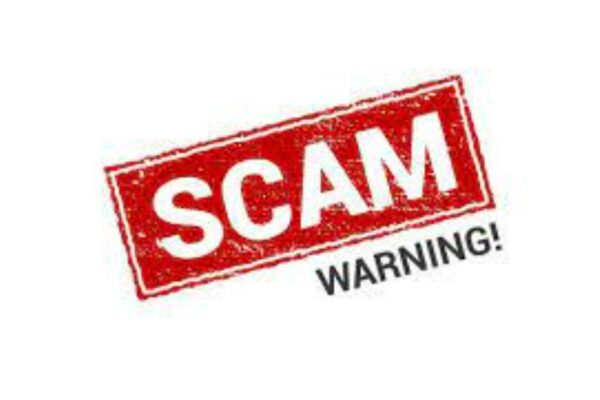GDQCoin.com Scam Review -A Risk Based Trader
Opening — the pitch that sounds modern, until the details don’t add up
You encounter GDQCoin through a bright social post: “Get in early on GDQ — AI staking, instant yields, exclusive presales.” The website looks slick: tokenomics tables, flashy roadmap graphics, and promises of rapid community growth. A Telegram group brims with activity and a handful of ambassadors push the narrative that “this is the next big thing.”
That first impression — professional design paired with aggressive marketing — is exactly the mix that lures many crypto investors. But beneath the surface there are several practical and technical indicators that suggest GDQCoin.com is a high-risk proposition. This review walks through those indicators in detail and gives a checklist you can use to evaluate the project on your own terms.
1) Team anonymity and ownership opacity
A fundamental trust anchor for any token project is a transparent team and verifiable ownership. Reputable projects publish the full names of founders and key developers, links to professional profiles, and verifiable company registration information.
With GDQCoin, the public team information is limited or absent. Biographies are vague, photos feel stock-photo generic, and there is no clear corporate entity tied to the token that can be independently verified. When operators conceal their identities, accountability is weak — a practical concern because anonymous teams have more ability to change direction, lock liquidity, or vanish if things go wrong.
2) Tokenomics that concentrate power
Token models should be readable and realistic: clear supply caps, transparent vesting schedules for founders, and on-chain evidence for allocations. Red flags appear when a high percentage of tokens are reserved for the team, marketing, or private wallets, or when vesting periods are extremely short or unclear.
GDQCoin’s token distribution, as presented publicly, emphasizes large allocations for “ecosystem” and “private sale” that are not accompanied by verifiable, time-locked vesting contracts. That kind of concentration can allow a small number of wallets to control price by dumping tokens or manipulating liquidity — a classic mechanism behind many rug-pull events.
3) Lack of credible smart-contract audits and open code
Smart contracts are the architectural backbone of token projects. Audits by reputable security firms and open source code repositories allow independent verification of whether contracts contain malicious logic (e.g., hidden owner privileges, minting functions, or transfer restrictions).
Publicly visible audit reports or well-known audit partners are absent or unconvincing for GDQCoin. The codebase is not clearly published in a public, versioned repository with a traceable commit history. Without open code and trusted audits, investors cannot reasonably assess whether the token includes backdoors that permit unilateral changes to balances, fees, or liquidity pools.
4) Liquidity and exchange listing concerns
Legitimate tokens typically show clear evidence of liquidity on reputable exchanges or DEX pools with locks that are verifiable on-chain. A healthy project explains where liquidity lives, how long it’s locked, and how much of the pool is controlled by independent parties.
GDQCoin’s exchange presence is either limited to obscure venues or is claimed but not independently verifiable. Liquidity locks, if mentioned, lack on-chain proof or have short lock durations. That means liquidity can be removed quickly, leaving token holders unable to sell — a structural mechanism used in many scams to trap capital and collapse prices once insiders exit.
5) Marketing tactics: FOMO, influencers and scripted communities
The marketing around GDQCoin relies heavily on urgency and social proof: countdowns for presales, “exclusive” allocation tiers, influencer endorsements, and a persistent recruitment of new members into chat groups.
Warning signs include: influencers hyping the project without disclosing compensation, chat admins editing or deleting critical comments, and promotional content that mimics independent reviews but is actually paid placement. When community activity is engineered to push purchases rather than to foster critical discussion, it’s often a signal that the primary goal is capital inflow, not sustainable product development.
6) Whitepaper and roadmap gaps
A whitepaper should explain the problem, the technical solution, token utility, governance, and clear milestones. Roadmaps are useful only when they include measurable deliverables and demonstrable progress.
GDQCoin’s whitepaper contains marketing language and high-level promises but lacks granular, verifiable milestones, measurable KPIs, or third-party technical references. Roadmap timelines are vague and progress updates are sporadic. When the story is stronger than the substance, risk increases.
7) Withdrawal friction and user experience reports
A practical litmus test for any token or exchange interaction is how smoothly users can withdraw funds. Reports that small withdrawals go through but larger ones are delayed, or that “processing fees” appear suddenly at payout time, are classic operational red flags.
Feedback from community threads and user anecdotes indicate cases of slow or blocked withdrawals tied to GDQCoin-related services — not uncommon in projects where liquidity or custodial control is problematic. Even isolated reports should be taken seriously because they reflect the real-world mechanics investors face when attempting to exit.
8) Legal, regulatory and KYC ambiguity
Tokens that promise financial returns without clear jurisdictional structure, or that avoid KYC while soliciting large investments, often operate in legal grey zones. Regulators around the world are increasingly scrutinizing token sales, and projects that hide jurisdiction or sweep regulatory risk under the rug expose investors to legal uncertainty.
GDQCoin’s legal posture is murky: there’s minimal disclosure about the issuing entity, no clear approach to investor protections, and unclear KYC/AML policies for larger contributors. That ambiguity increases counterparty and regulatory risk.
9) Practical red-flag checklist
Before you consider buying or holding GDQCoin, run this quick checklist:
-
Is the founding team fully identified with verifiable credentials?
-
Is the smart contract code public, and has it been audited by a reputable firm?
-
Are token allocations and vesting schedules explicit and on-chain?
-
Is liquidity visible on reputable exchanges or DEXs, and is it time-locked?
-
Do withdrawals work reliably at all amounts?
-
Are paid influencers and promotions clearly disclosed?
-
Does the whitepaper contain measurable, verifiable milestones?
-
Is there a clear legal entity, jurisdiction, and KYC/AML policy?
Multiple “no” answers indicate substantial risk.
10) Analytical conclusion — why the cumulative picture matters
Any single concern (young project, private sales, or energetic marketing) can be benign in isolation. The real danger arises when many concerns accumulate: anonymous team, concentrated token power, missing audits, fragile liquidity, and marketing that prioritizes inflows. GDQCoin displays multiple elements of that risky constellation.
This is a practical, risk-based assessment, not a legal verdict. The implication for investors is straightforward: without transparent team credentials, audited smart contracts, verifiable liquidity locks, and demonstrated, reliable withdrawal mechanics, GDQCoin’s profile is consistent with projects that have previously led to substantial investor losses.
Closing variation — a short investor vignette
Imagine a careful investor, Sam, attracted by a presale discount and upbeat community posts. Sam buys a meaningful allocation, watches early price snapshots climb, and is encouraged to convert gains to a higher tier. When it’s time to cash out, Sam encounters delays and new “release” fees. Messages to support go unanswered. Weeks later the token price collapses when a large wallet dumps into a thin pool. Sam is left holding illiquid tokens while the project’s social channels cheer a new marketing push. That scenario — repeated in many documented cases — is exactly the kind of outcome the risk signals here are designed to help you avoid.
Report GDQCoin.com Scam and Recover Your Funds
If you have lost money to GDQCoin.com Scam, it’s important to take action immediately. Report the scam to Jayen-consulting.com, a trusted platform that assists victims in recovering their stolen funds. The sooner you act, the better your chances of reclaiming your money and holding these fraudsters accountable.
Scam brokers like GDQCoin.com continue to target unsuspecting investors. Stay informed, avoid unregulated platforms, and report scams to protect yourself and others from financial fraud.
Stay smart. Stay safe.






